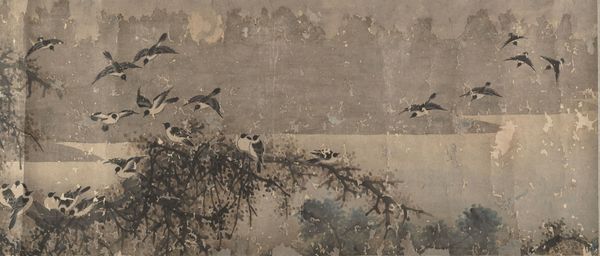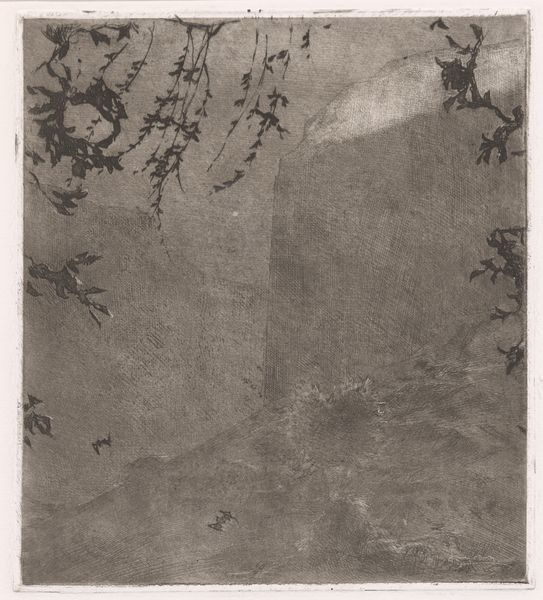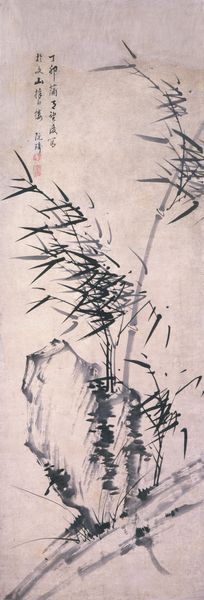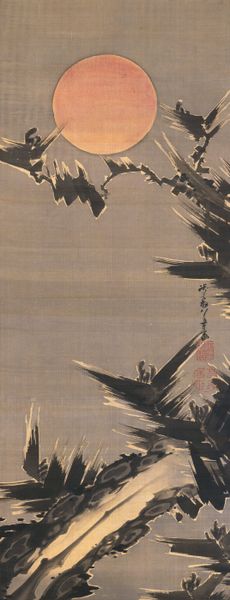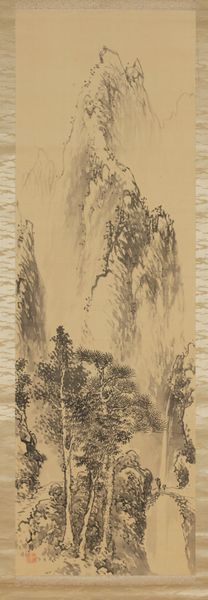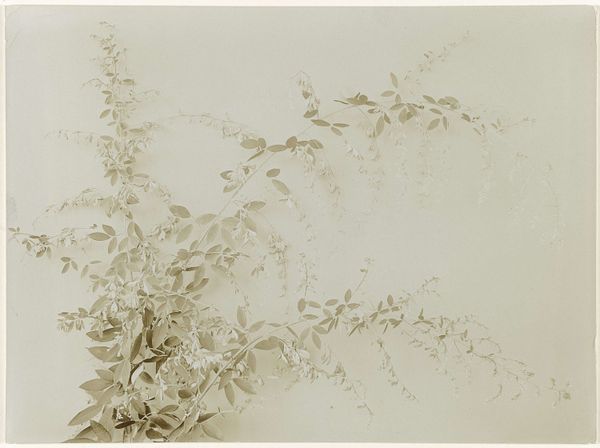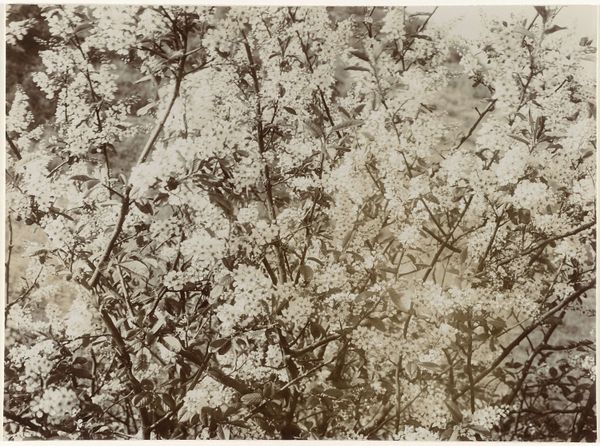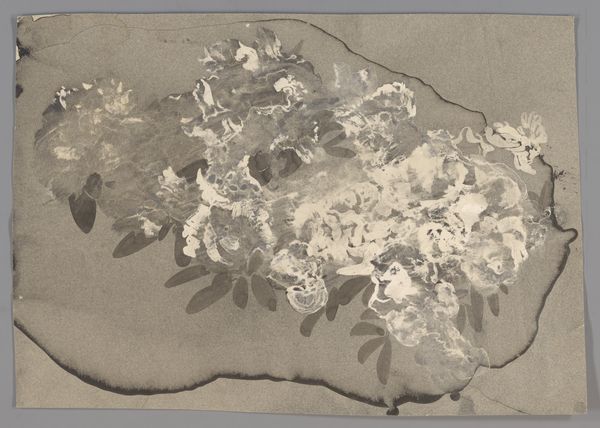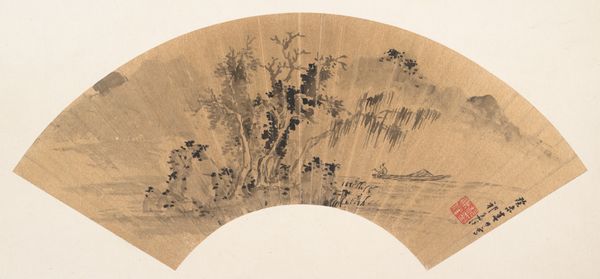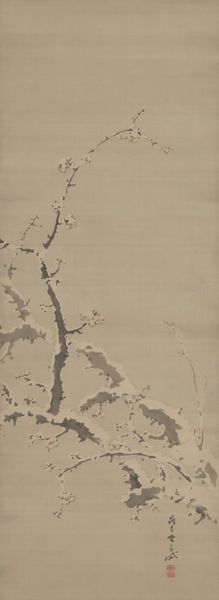
drawing, painting, ink-on-paper, hanging-scroll, ink
#
drawing
#
ink drawing
#
ink painting
#
painting
#
asian-art
#
ink-on-paper
#
hanging-scroll
#
ink
#
china
#
line
#
monochrome
Dimensions: 100 1/8 x 47 5/8 in. (254.32 x 120.97 cm) (a (left scroll), overall, without roller)
Copyright: Public Domain
Curator: As we stand before this artwork titled "One Hundred Crabs," dating back to 1835 and crafted by Zhao Ziyong, what captures your attention? It's an ink-on-paper hanging scroll. Editor: Well, immediately, it's the sheer volume and activity that strikes me. A flurry of crabs, seemingly scrambling over each other! There’s a dense, almost frantic energy created by the monochrome ink work. It feels bustling, despite the limited palette. Curator: Absolutely, and that dynamism is something Zhao Ziyong really plays with. We have to remember the cultural context; in Chinese art, crabs often symbolize prosperity and success, doing so with its association to accumulating wealth during imperial examinations. Editor: Fascinating! So, a visual metaphor using nature… It begs the question, though, about the paper itself. Notice how absorbent it must be, drinking up that ink to create such tonal variation. What did paper production and the artist's brushwork have to say about its availability, craftmanship, or status? Curator: That’s a fantastic point. The use of ink-on-paper was highly valued, but not universally available, naturally implying specific forms of patronage and display, depending on their place in wider Chinese culture. So we are encouraged to recognize the intersection of materials and skill with its historical significance. Editor: Yes, because to produce an artwork like this involves so much labor that precedes even Zhao's composition. Consider the harvesters, sorters and craftsmen that shaped the texture, evenness and absorbency that this work demonstrates, transforming plant fibres. Each one impacts the possibility for Zhao Ziyong's craft! Curator: Exactly. Thinking about how that material accessibility impacted Zhao’s life at the time enhances the appreciation of this singular art experience. We've been focusing on the subject of 'One Hundred Crabs,' a sign of collective action; and yet that meaning depends on seeing and being seen within social institutions. Editor: The more you delve into that interaction of ink, brush and the history of art-making, the more meaningful, even profound, the composition becomes. What once seemed frantic now whispers of labor, access and production itself. Curator: A powerful reminder that our interpretation is interwoven with the art object’s historical and material life!
Comments
minneapolisinstituteofart almost 2 years ago
⋮
Tall reeds bend gracefully over a bank of grass while a host of crabs scuttle along the water’s edge, pincers held high. The crab was a standard subject of paintings, and like bamboo and orchids lent itself to expressive brushwork. Originally mounted as four hanging scrolls, this composition has a panoramic effect—difficult to achieve in the single, hanging-scroll format. The shorter of the two inscriptions reads: One hundred crabs,Set free in river or lakeThey come and go as they please.Reeds continue through the end of springAnd the fragrant mayweed through autumn;Throughout their lives they are unwillingTo lower their paired eyes,Hoping to see to the end of the pureAnd sometimes muddy stream. Painted and inscribed by Zhao Guangqi during an autumn month in 1835
Join the conversation
Join millions of artists and users on Artera today and experience the ultimate creative platform.
